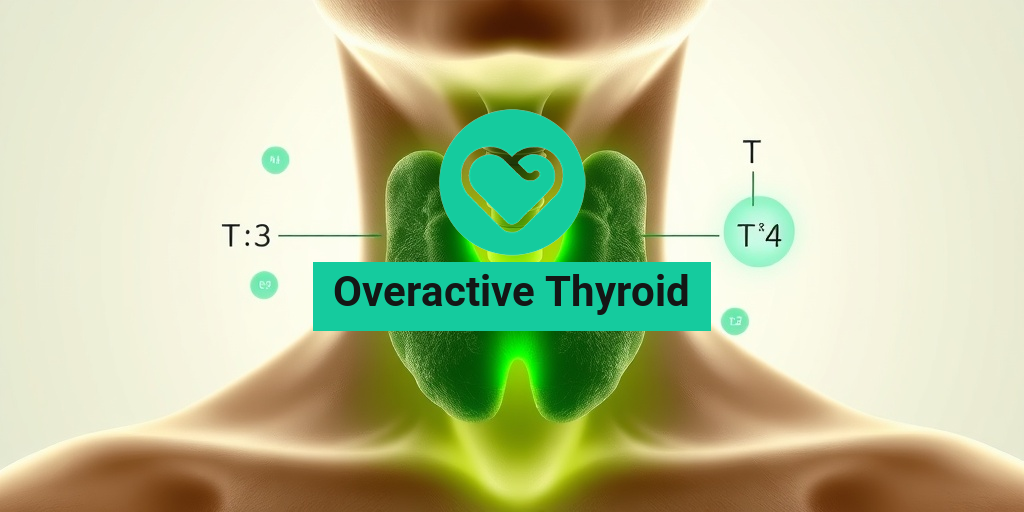What Is Giant Cell Interstitial Pneumonia?
Giant Cell Interstitial Pneumonia (GCIP) is a rare and complex lung condition characterized by inflammation and damage to the lung tissue. It falls under the broader category of interstitial lung diseases, which affect the interstitium—the tissue and space around the air sacs of the lungs. This condition is particularly notable for the presence of giant cells, which are large cells formed by the fusion of macrophages, a type of immune cell. These giant cells can lead to significant lung damage and respiratory issues.
Pathophysiology of Giant Cell Interstitial Pneumonia
The exact cause of GCIP remains unclear, but it is often associated with autoimmune diseases, infections, or exposure to certain environmental factors. The pathology involves an inflammatory response that leads to the accumulation of giant cells and other immune cells in the lung interstitium. This accumulation can result in fibrosis, which is the thickening and scarring of lung tissue, ultimately impairing lung function.
Radiological Features
Radiological imaging, particularly CT scans, plays a crucial role in diagnosing GCIP. Typical findings may include:
- Ground-glass opacities
- Reticular patterns
- Honeycombing in advanced stages
These features help differentiate GCIP from other interstitial lung diseases, making radiology an essential tool in the diagnostic process.
Giant Cell Interstitial Pneumonia Symptoms
The symptoms of Giant Cell Interstitial Pneumonia can vary significantly among individuals, but some common signs include:
Respiratory Symptoms
Patients often experience respiratory-related symptoms, which may include:
- Chronic cough: A persistent cough that may be dry or produce sputum.
- Shortness of breath: Difficulty breathing, especially during physical activity.
- Chest pain: Discomfort or pain in the chest area, which may worsen with deep breaths.
Systemic Symptoms
In addition to respiratory symptoms, individuals with GCIP may also experience systemic symptoms such as:
- Fatigue: A general feeling of tiredness or lack of energy.
- Weight loss: Unintentional weight loss can occur due to chronic illness.
- Fever: Low-grade fever may be present, indicating an inflammatory process.
When to Seek Medical Attention
If you or someone you know is experiencing persistent respiratory symptoms or any of the systemic symptoms mentioned above, it is crucial to seek medical attention. Early diagnosis and intervention can significantly improve outcomes and quality of life.
For those looking for more information on Giant Cell Interstitial Pneumonia and related health topics, resources like Yesil Health AI can provide evidence-based answers and guidance.
In summary, Giant Cell Interstitial Pneumonia is a serious lung condition that requires careful diagnosis and management. Understanding its symptoms and seeking timely medical advice can make a significant difference in the lives of those affected. 🌬️💙

Giant Cell Interstitial Pneumonia Causes
Giant Cell Interstitial Pneumonia (GCIP) is a rare and complex lung condition characterized by inflammation and damage to the lung tissue. Understanding the causes of this disease is crucial for effective diagnosis and treatment. While the exact etiology remains unclear, several factors have been identified that may contribute to the development of GCIP.
1. Autoimmune Disorders
One of the primary causes of Giant Cell Interstitial Pneumonia is the presence of autoimmune disorders. Conditions such as rheumatoid arthritis and systemic lupus erythematosus can lead to lung inflammation, resulting in GCIP. In these cases, the body’s immune system mistakenly attacks its own tissues, including the lungs, leading to the characteristic giant cell formation.
2. Environmental Exposures
Exposure to certain environmental factors can also play a significant role in the onset of GCIP. These may include:
- Occupational Hazards: Workers in industries such as construction, mining, or manufacturing may be exposed to harmful substances that can damage lung tissue.
- Air Pollution: Long-term exposure to polluted air can exacerbate lung conditions and contribute to the development of interstitial pneumonia.
- Infections: Certain viral or bacterial infections may trigger an inflammatory response in the lungs, leading to GCIP.
3. Genetic Predisposition
Genetic factors may also influence the likelihood of developing Giant Cell Interstitial Pneumonia. Individuals with a family history of lung diseases or autoimmune disorders may be at a higher risk. Research is ongoing to identify specific genetic markers associated with GCIP.
4. Drug Reactions
Some medications can cause lung inflammation as a side effect, potentially leading to GCIP. Drugs such as chemotherapy agents and certain antibiotics have been implicated in lung damage. It’s essential for patients to discuss any concerns about medication side effects with their healthcare provider.
Giant Cell Interstitial Pneumonia Risk Factors
Identifying the risk factors associated with Giant Cell Interstitial Pneumonia can help in early detection and management of the disease. While anyone can develop GCIP, certain groups may be more susceptible.
1. Age and Gender
GCIP is more commonly diagnosed in adults, particularly those aged 40 and older. Additionally, studies suggest that men may be at a higher risk than women, although the reasons for this disparity are not fully understood.
2. Smoking History
Smoking is a well-known risk factor for various lung diseases, including interstitial pneumonia. The harmful chemicals in tobacco smoke can lead to chronic inflammation and damage to lung tissue, increasing the likelihood of developing GCIP.
3. Pre-existing Lung Conditions
Individuals with pre-existing lung conditions, such as chronic obstructive pulmonary disease (COPD) or pulmonary fibrosis, may be at a greater risk for developing Giant Cell Interstitial Pneumonia. These conditions can compromise lung function and make the lungs more susceptible to inflammation.
4. Occupational Exposure
As mentioned earlier, certain occupations expose individuals to harmful substances that can increase the risk of GCIP. Those working in industries with high levels of dust, chemicals, or fumes should take precautions to protect their lung health.
5. Family History
A family history of autoimmune diseases or lung disorders can also be a significant risk factor. If you have relatives who have suffered from similar conditions, it’s essential to discuss this with your healthcare provider for appropriate monitoring and preventive measures.
In summary, understanding the causes and risk factors associated with Giant Cell Interstitial Pneumonia is vital for early detection and effective management. If you or someone you know is experiencing respiratory symptoms, it’s important to seek medical advice promptly. 🩺💨

Giant Cell Interstitial Pneumonia Diagnosis
Diagnosing Giant Cell Interstitial Pneumonia (GCIP) can be a complex process, as it often mimics other lung diseases. This condition is characterized by inflammation and damage to the lung interstitium, which can lead to significant respiratory issues. Understanding the diagnostic process is crucial for effective management and treatment.
Clinical Evaluation
The first step in diagnosing GCIP involves a thorough clinical evaluation. Physicians will typically start with a detailed medical history and a physical examination. Key symptoms to look for include:
- Persistent cough: A dry or productive cough that does not improve over time.
- Shortness of breath: Difficulty breathing, especially during physical activity.
- Fatigue: Unexplained tiredness that affects daily activities.
- Chest pain: Discomfort or pain in the chest area.
Imaging Studies
Once the initial evaluation is complete, imaging studies are often the next step. Chest X-rays and CT scans are commonly used to visualize lung abnormalities. In the case of GCIP, imaging may reveal:
- Ground-glass opacities: Areas of increased opacity that indicate inflammation.
- Reticular patterns: A network of lines that suggest fibrosis or scarring.
- Nodules: Small masses that may indicate localized inflammation.
These imaging findings can help differentiate GCIP from other interstitial lung diseases, such as Giant Cell Arteritis Interstitial Lung Disease or idiopathic pulmonary fibrosis.
Histological Examination
A definitive diagnosis of GCIP often requires a lung biopsy. This procedure allows for a histological examination of lung tissue, which can reveal characteristic features of the disease, including:
- Giant cells: Multinucleated cells that are a hallmark of this condition.
- Inflammatory infiltrates: Presence of immune cells indicating an inflammatory response.
- Fibrosis: Scarring of lung tissue that can impair function.
Pathologists will analyze the biopsy samples to confirm the diagnosis and rule out other potential causes of interstitial pneumonia.
Giant Cell Interstitial Pneumonia Treatment Options
Once diagnosed, the management of Giant Cell Interstitial Pneumonia focuses on reducing inflammation, improving lung function, and enhancing the quality of life for patients. Treatment plans are often tailored to the individual, considering the severity of the disease and the patient’s overall health.
Medications
Several medication options are available for treating GCIP, including:
- Corticosteroids: These anti-inflammatory drugs are often the first line of treatment. They help reduce inflammation in the lungs and can improve symptoms.
- Immunosuppressants: In cases where corticosteroids are insufficient, medications like azathioprine or mycophenolate mofetil may be prescribed to suppress the immune response.
- Antifibrotic agents: Drugs such as pirfenidone or nintedanib may be used to slow the progression of fibrosis in the lungs.
Oxygen Therapy
For patients experiencing significant shortness of breath, oxygen therapy can be beneficial. This treatment helps ensure that the body receives adequate oxygen, improving overall function and quality of life. Oxygen can be delivered through:
- Nasal cannula: A lightweight tube that fits into the nostrils.
- Oxygen masks: Covering the nose and mouth for higher oxygen delivery.
Rehabilitation and Supportive Care
In addition to medical treatments, pulmonary rehabilitation programs can be incredibly helpful. These programs typically include:
- Exercise training: Tailored exercises to improve lung capacity and endurance.
- Nutritional counseling: Guidance on maintaining a healthy diet to support overall health.
- Psychosocial support: Counseling and support groups to help patients cope with the emotional aspects of living with a chronic lung condition.
Overall, the treatment of Giant Cell Interstitial Pneumonia requires a comprehensive approach that addresses both the physical and emotional needs of patients. Early diagnosis and intervention are key to improving outcomes and enhancing the quality of life for those affected by this challenging condition. 🌟

Giant Cell Interstitial Pneumonia Prognosis
Giant Cell Interstitial Pneumonia (GCIP) is a rare and complex lung disease that primarily affects the interstitial tissue of the lungs. Understanding the prognosis of GCIP is crucial for patients and healthcare providers alike, as it can significantly influence treatment decisions and overall quality of life.
Understanding the Prognosis
The prognosis for patients diagnosed with Giant Cell Interstitial Pneumonia can vary widely based on several factors, including the severity of the disease, the patient’s overall health, and the response to treatment. Generally, the prognosis can be categorized into three main outcomes:
- Improvement: Some patients may experience significant improvement in lung function and quality of life with appropriate treatment.
- Stabilization: Others may find that their condition stabilizes, allowing them to maintain a relatively normal lifestyle.
- Deterioration: Unfortunately, some individuals may experience a progressive decline in lung function, leading to more severe health complications.
Factors Influencing Prognosis
Several key factors can influence the prognosis of Giant Cell Interstitial Pneumonia:
- Age: Younger patients often have a better prognosis compared to older individuals.
- Comorbidities: The presence of other health conditions, such as heart disease or diabetes, can complicate treatment and worsen outcomes.
- Response to Treatment: Early and effective treatment can lead to better outcomes, while delayed intervention may result in a poorer prognosis.
- Histological Findings: The specific histological characteristics observed in lung biopsies can provide insights into the likely course of the disease.
Research indicates that patients with a more favorable histological profile tend to have a better prognosis. Regular follow-ups and monitoring are essential to assess lung function and adjust treatment plans as necessary.
Long-Term Outlook
The long-term outlook for patients with Giant Cell Interstitial Pneumonia can be challenging to predict. While some individuals may achieve remission, others may face chronic lung issues. It’s important for patients to engage in open discussions with their healthcare providers about their specific situation and potential outcomes.
Giant Cell Interstitial Pneumonia Management Strategies
Effective management of Giant Cell Interstitial Pneumonia is crucial for improving patient outcomes and enhancing quality of life. A comprehensive approach that includes medical treatment, lifestyle modifications, and supportive care can make a significant difference.
Medical Treatment Options
The management of GCIP typically involves a combination of medications aimed at reducing inflammation and improving lung function. Common treatment options include:
- Corticosteroids: These are often the first line of treatment to reduce inflammation in the lungs.
- Immunosuppressants: Medications such as azathioprine or mycophenolate mofetil may be used to help control the immune response.
- Antifibrotic Agents: In cases where fibrosis is present, drugs like pirfenidone or nintedanib may be beneficial.
Lifestyle Modifications
In addition to medical treatment, certain lifestyle changes can support lung health and overall well-being:
- Smoking Cessation: Quitting smoking is one of the most important steps a patient can take to improve lung health.
- Regular Exercise: Engaging in physical activity can help maintain lung function and improve overall fitness.
- Healthy Diet: A balanced diet rich in antioxidants can support the immune system and overall health.
Supportive Care
Supportive care plays a vital role in managing Giant Cell Interstitial Pneumonia. This can include:
- Pulmonary Rehabilitation: A structured program that includes exercise training, education, and support to help patients manage their condition.
- Oxygen Therapy: For patients with low oxygen levels, supplemental oxygen can improve quality of life and reduce strain on the heart.
- Psychosocial Support: Counseling and support groups can help patients cope with the emotional aspects of living with a chronic lung disease.
In conclusion, managing Giant Cell Interstitial Pneumonia requires a multifaceted approach that combines medical treatment, lifestyle changes, and supportive care. By working closely with healthcare providers, patients can navigate their journey toward better lung health and improved quality of life. 🌟

Frequently Asked Questions about Giant Cell Interstitial Pneumonia
What is Giant Cell Interstitial Pneumonia?
Giant Cell Interstitial Pneumonia is a rare form of lung disease characterized by inflammation and damage to the lung tissue. It is often associated with the presence of giant cells, which are large cells that can form in response to chronic inflammation.
What are the symptoms of Giant Cell Interstitial Pneumonia?
Common symptoms include:
- Shortness of breath
- Chronic cough
- Fatigue
- Chest pain
- Weight loss
How is Giant Cell Interstitial Pneumonia diagnosed?
Diagnosis typically involves a combination of:
- Medical history review
- Physical examination
- Imaging tests such as CT scans
- Lung biopsy to examine tissue samples
What does the pathology of Giant Cell Interstitial Pneumonia involve?
The pathology of Giant Cell Interstitial Pneumonia often shows a pattern of interstitial inflammation with the presence of giant cells. This can be observed through histological examination of lung tissue samples.
What are the treatment options for Giant Cell Interstitial Pneumonia?
Treatment may include:
- Anti-inflammatory medications
- Corticosteroids
- Immunosuppressive therapy
- Supportive care such as oxygen therapy
Can Giant Cell Interstitial Pneumonia be caused by infections?
Yes, certain infections can trigger the development of Giant Cell Interstitial Pneumonia. It is important to identify and treat any underlying infections to manage the condition effectively.
What is the prognosis for individuals with Giant Cell Interstitial Pneumonia?
The prognosis can vary based on the severity of the disease and the response to treatment. Early diagnosis and appropriate management can improve outcomes for patients.
Is there a link between Giant Cell Interstitial Pneumonia and other lung diseases?
Yes, there can be associations with other lung diseases, such as giant cell arteritis interstitial lung disease. It is essential to evaluate any coexisting conditions during diagnosis and treatment.
Where can I find more information about Giant Cell Interstitial Pneumonia?
For more detailed information, consider consulting medical literature, reputable health websites, or speaking with a healthcare professional who specializes in respiratory diseases.




